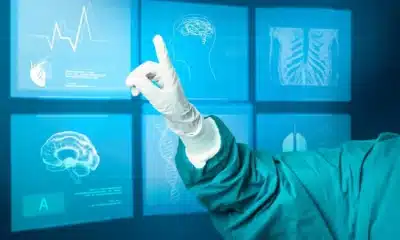Tech
Top Competency Framework Trends That Are Redefining Learning and Development in 2025
Published
3 hours agoon
By
IQnewswire
The Learning and Development (L&D) landscape in 2025 is redefining organisational training trends with an increase in personalisation, AI-driven analytics, as well as reskilling and upskilling practices to address the continuously changing workforce landscape.
The modern competency frameworks are also constructed with a focus on these trends, along with employee-centric learning approaches. This blog will address some of the top competency framework trends in 2025 that are re-evaluating what L&D should be.
AI-Driven Personalisation in Competency Mapping
Artificial Intelligence (AI) has completely transformed learning and development competency frameworks in an organisational landscape. AI offers the capability to intricately evaluate vast datasets to accurately assess employee skills, identify employee skill gaps, and provide learning pathways personalized for individual needs.
Since AI can easily manage vast datasets, it can evaluate each employee individually, analyzing their needs and fostering their competencies with a personal touch.
In fact, as per a study by SHRM, AI-driven L&D solutions have increased employee productivity up to 20%, with improved, dynamic, and data-driven forecasts.
Contemporary workforces are being benefitted by this with each employee getting a real-time career dashboard. Here, real-time information driven by AI pathways is outlining potential mobility paths based on the needs of each employee, helping them overcome skill gaps with tailored learning solutions.
For example, IBM’s AI-driven and personalized L&D approach has led to increased efficiency in employee competency development. This, and providing tailored L&D courses, have led to the company saving more than $100 million in 2018.
Here is a comparative analysis of how AI-driven L&D can bring improvements over traditional L&D:
| Features | AI-driven L&D | Traditional L&D |
| Employee-specific Learning | Personalized to employee needs | Pre-designed one-size-fits-all learning approaches |
| Feedback | Real-time and instant feedback | Slow feedback loops |
| Scalability | Highly scalable and cost-effective | Limited scalability |
| Learning Approach | Tracking individual needs to provide a continuous learning approach | One-off and periodic training events |
Table: AI-driven vs. Traditional L&D
Integration of Soft Skills and Emotional Intelligence
Another key trend in the modern competency development landscape is the increased attention towards soft skills. In the continuously changing professional landscape, these skills have become increasingly critical to navigating the ups and downs of a dynamic work environment.
A shift from competency models that only focus on the technical aspects towards a more hybrid approach has led to soft skills becoming a top competency feature.
Some of the key features of soft skills that are extremely relevant to the modern workplace are:
- Adaptability: The soft skillset of adaptability and resilience can allow an employee to thrive in a changing environment. They are more welcoming of change and are prepared to learn from setbacks to gradually improve their skills.
- Problem-solving: Any employee with a problem-solving mindset will approach challenges with a creative attitude, drawing out innovative solutions.
- Emotional Intelligence: Emotional intelligence enables one to understand and manage their own emotions, in turn learning to understand the emotions of others as well. This creates a work environment where empathy and understanding lead to a positive work culture.
Focusing on emotional intelligence, it is increasingly becoming a critical driving force for competencies in contemporary work cultures. It raises skills of self-regulation, social awareness, relationship management, and other interpersonal capabilities.
The significance of emotional intelligence (EQ) is best explained by Breakthrough ROI, stating that 90% of top performers have high EQ, and a single EQ point adds $1,300 to an employee’s salary.
Real-Time and Continuous Competency Assessment
Another crucial trend in the modern learning and development competency framework is the increased focus on real-time and continuous assessments of competencies.
The modern work environment is competitive and fast-paced. Thus, organisations can no longer just rely on annual performance reviews to evaluate the progress of their employees. Agility, adaptability, and continuous communication are preferred in this scenario. Thus, continuous assessments such as feedback loops have become crucial.
It takes an almost gamified approach, where a culture of regular improvement, agility, and collaboration is fostered through micro assessments with rewards for small achievements and continuous growth analysis.
A study by Gallup has established this statement with the observation that effective feedback systems in organisations have led to a 14.9% fall in employee turnover.
These practices, however, are increasingly enabled by real-time tracking of performance. In such a case, real-time data provides insights into employee performance, identifying skill gaps and enabling targeted development programs. Therefore, leading to increased employee productivity and engagement.
Studies have shown that a 22% rise in employee engagement levels has been observed in organisations implementing real-time tracking of performance metrics.
Industry-Specific Competency Frameworks
The regular update and alignment of competencies with the evolving needs of a business ensures competitiveness and effectiveness of an organisation. Most of the top competency frameworks in the contemporary business environment are specific to the industry’s needs.
Every organisation in every industry is not facing the same challenges in competency and employee growth, and development. Therefore, sector-specific competencies are critical to understanding what it takes to excel in each industry.
This can be seen as organisations across various industries are undertaking bespoke competency framework designs. This way, organisations evaluate the specific skills, knowledge, and behaviour required for a particular role or profession. This has become a common practice in healthcare, financial, and tech industries.
Here is a chart differentiating a competency model from a bespoke model:
| Factors | Competency Model | Bespoke Model |
| Focus | General focus | Specific and tailored |
| Orientation | General guidelines | Addressing specific needs |
| Customisation | Set structures | Highly customisable |
Table: Competency Models vs. Bespoke Models
To Summarize
In the practices of employee growth and development across industries, the competency frameworks are changing to meet the needs of the growing business landscape. The applications of AI-driven competency frameworks, real-time and continuous feedback processes, and the integration of emotional intelligence and industry-specific practices have all been driving trends in L&D in 2025.
Adopt A Modern L&D Trend Today!
If you are looking to define your organisation’s workforce in contemporary L&D systems, you can look into some of these trends discussed. Understand how your recruitment, training, and development processes work, and evaluate the needs of your workforce by implementing a modern competency framework.

Why Prescription Night Driving Glasses Are a Game-Changer for Safe Driving

Kerrie Gosney’s Age, Husband, Children, and Net Worth: Everything You Should Know

Mike Danson: Age, Net Worth, Wife, Kids, and the Truth About His Yacht

Why Recognising Sporting Achievement in Schools Matters

Kay Crewdson Age, Date of Birth, Husband, Children, and Net Worth: The Full Story

Top Competency Framework Trends That Are Redefining Learning and Development in 2025

Justin Basini Net Worth, Age, Career, Wife, and Children

Sophia Wenzler Age, Husband, and Net Worth: Everything You Need to Know

Salma Shah: Age, Net Worth, Career, Husband, and Children Revealed

How to Stack Anavar and Winstrol Safely for a Lean Muscle Cycle

Revolutionizing Healthcare: The Emergence of AI-Driven Analytics

How Machine Learning and AI are Redefining the Future?

Aliza Barber: Meet Lance Barber’s Wife, Age, Life, Profile, Career and Net Worth

Evelyn Melendez: Jordan Knight’s Wife Bio, Marriage, Family, Career and Net Worth

Who was Alice Marrow? Everything to Know About Ice-T’s and His Mother

Ilan Tobianah Biography: Family, Marriage, Lifestyle, Career and Net Worth

Meet Otelia Cox: The Supportive Wife of Tony Cox – A True Fairy Tale Romance

Tex9.net Business: Solve Business Problems with the Help of Tex9.net

King Von’s Autopsy Report: The Truth Behind the Tragic Death

Exploring Real Estate Market: Smart Strategies for Savvy Investors

Why Prescription Night Driving Glasses Are a Game-Changer for Safe Driving

Kerrie Gosney’s Age, Husband, Children, and Net Worth: Everything You Should Know

Mike Danson: Age, Net Worth, Wife, Kids, and the Truth About His Yacht

Why Recognising Sporting Achievement in Schools Matters

Kay Crewdson Age, Date of Birth, Husband, Children, and Net Worth: The Full Story

Top Competency Framework Trends That Are Redefining Learning and Development in 2025

Justin Basini Net Worth, Age, Career, Wife, and Children

Sophia Wenzler Age, Husband, and Net Worth: Everything You Need to Know

Salma Shah: Age, Net Worth, Career, Husband, and Children Revealed

How to Stack Anavar and Winstrol Safely for a Lean Muscle Cycle
Category
Trending
-

 Health2 years ago
Health2 years agoRevolutionizing Healthcare: The Emergence of AI-Driven Analytics
-

 Technology2 years ago
Technology2 years agoHow Machine Learning and AI are Redefining the Future?
-

 Celebrity1 year ago
Celebrity1 year agoAliza Barber: Meet Lance Barber’s Wife, Age, Life, Profile, Career and Net Worth
-

 Celebrity1 year ago
Celebrity1 year agoEvelyn Melendez: Jordan Knight’s Wife Bio, Marriage, Family, Career and Net Worth






